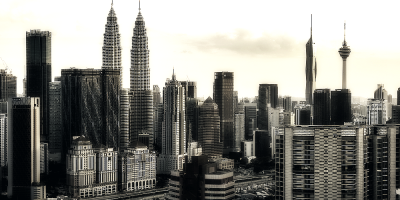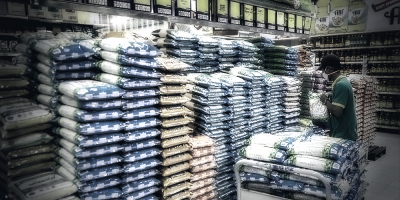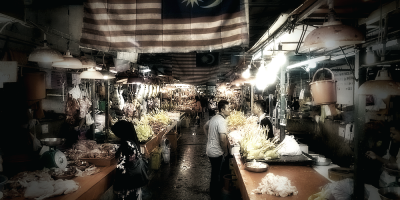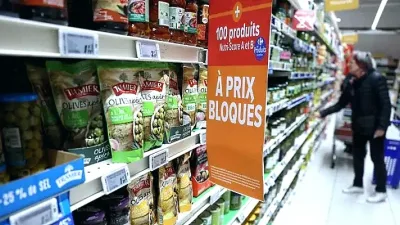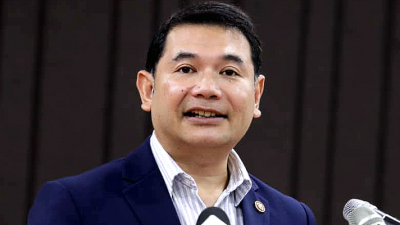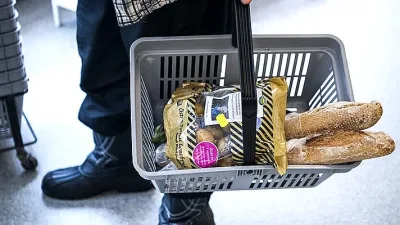In the event the government decides to abandon the subsidy policy, transportation cost will go through the roof, and that’s when the real inflation will show up.
Finance minister Tengku Zafrul said global inflation would continue for some time and as such the government would continue to control goods and petrol prices by way of subsidies.
First and foremost, why global inflation? Very simple, Western countries have slapped economic sanctions on Russia as a result of its invasion of Ukraine, restricting the exports of oil, natural gas, steel, coal and agricultural produce. The disruption in global supply chain has effectuated a supply-demand imbalance, sending goods prices sky high.
Besides, to suppress the rising inflation within the United States, the Federal Reserve has tightened its monetary policy by raising the interest rate. As a result, global currencies fall against the greenback, making imports even costlier.
Other than inflation, what is more worrying is food crisis. Due to the poor climate globally, severe drought is almost unavoidable this summer and food production is expected to plummet.
Already. India has announced to cease the export of some 10 million tons of wheat, an amount enough to feed 120 million people for a whole year. This, coupled with the missed spring crop sowing season, is going to make 2022 a truly bad year for food production.
The coronavirus pandemic, war, inflation and food crisis all happening at the same time are enough to bring starvation to people living in impoverished nations.
Back in Malaysia, the finance minister said the country’s CPI is expected to grow 2.2% to 3.2% this year, far below those of Singapore (5.4%), UK (7%) and US (8.5%). However, we believe the “palpable” inflation among Malaysians is most definitely higher than 2 or 3%.
Prices of pork, for instance, has increased five times in under six months. Even a simple mixed rice meal and black coffee are at least 15% dearer, while fresh produce and cooking ingredients at supermarkets are 10% more expensive.
Are those big shots in Putrajaya not aware of the rising prices? Don’t get us wrong, because there are different ways of measuring inflation, the most common being CPI (consumer price index).
In economics, we use the prices of “a basket of goods and services” to compute the CPI. There are hundreds of items in this basket, each with varying weighting, including accommodation, household items, clothing, transport cost, medical insurance, electronics, etc. Unfortunately, the prices of pork, mixed rice and kopi O which may make up a sizable proportion of our daily consumption are not inside this basket. So, even if the prices of these items surge many times over, the CPI remains very much 2.2%.

Why then is our inflation rate so much lower than Singapore and Western countries? Because our government is putting in a lot of effort to control fuel and goods prices. In the event the government decides to abandon this policy, transportation cost will go through the roof, and that’s when the real inflation will show up.
Tengku Zafrul said the government spent over RM4 billion on fuel subsidies in March alone, so that we could still enjoy relatively cheap RON95.
As of May 9, our RM2.05 per liter tariff was the 11th lowest in the world!
Currently, the average fuel price globally is RM5.90 per liter. The RM9.29 and RM5.99 per liter in neighboring Singapore and Thailand respectively are three to five times higher than ours. So, how are we going to stop them from filling up their tanks with cheaper fuel across the borders?
Globally, the most expensive fuel is in Hong Kong at RM12.66 per liter. By comparison, it’s RM5.20 in the US and RM8.90 in the UK.
Tengku Zafrul also anticipated the country’s GDP to expand by 5.3% to 6.3% this year, having grown 5% during the first quarter.
The minister had projected the 2021 GDP to grow 6% when tabling the annual Budget two years ago, but we eventually only managed 3.1%, after suffering a 5.1% contraction in 2020.
We believe that after all economic sectors have opened up from May, we should be able to achieve the growth target if not because of the inflation and the consequent quarter percentage point rise in OPR which is set to dampen consumption, although keeping the rate steady will risk further ringgit devaluation.
Another factor that we can count on is petroleum. If crude oil prices remain above US$100 per barrel, we should rake in $21.9 billion in oil revenue on daily output of 600,000 barrels. This will help spearhead the country’s economic development.
In view of the above factors, we can optimistically project a 7% growth in the year to come, hopefully.
As for ordinary citizens whose salaries would never catch up with the skyrocketing prices of daily essentials, the government will have to continue subsidizing the prices of fuel and certain controlled items to help mitigate the insurmountable financial pressure on the people’s shoulders.
Hopefully we all get to sail past this hurdle safely as we look forward to a 7% V-shaped recovery in 2023!
ADVERTISEMENT
ADVERTISEMENT






